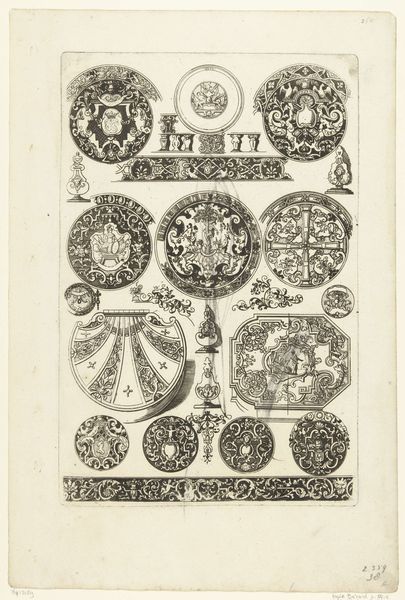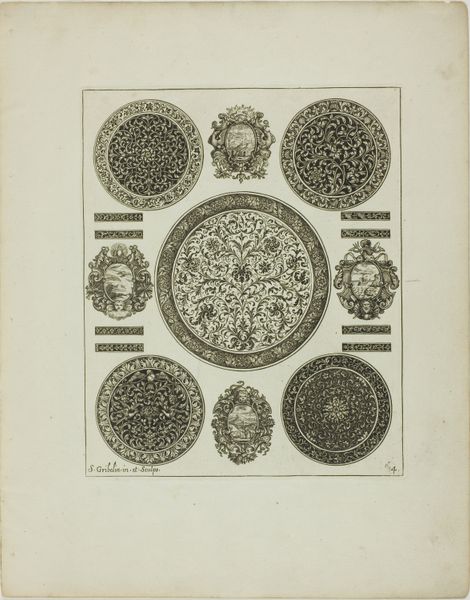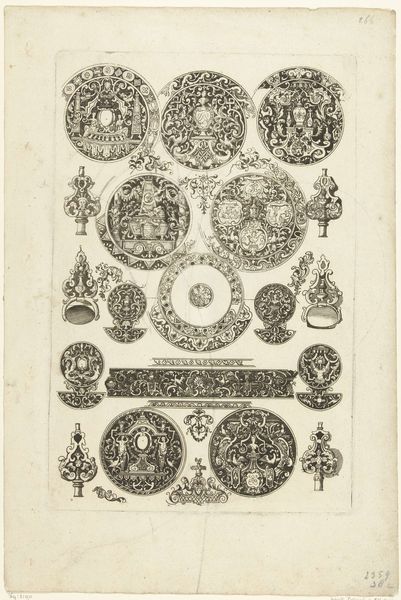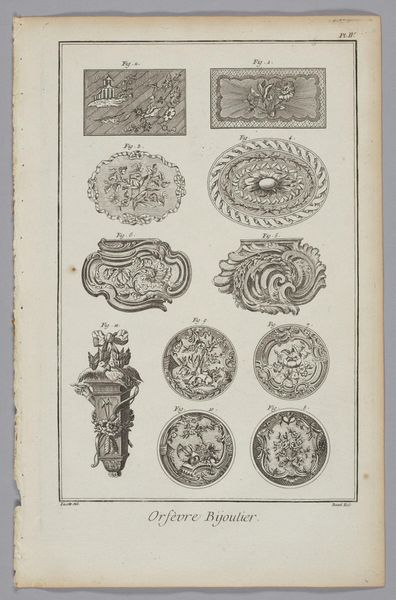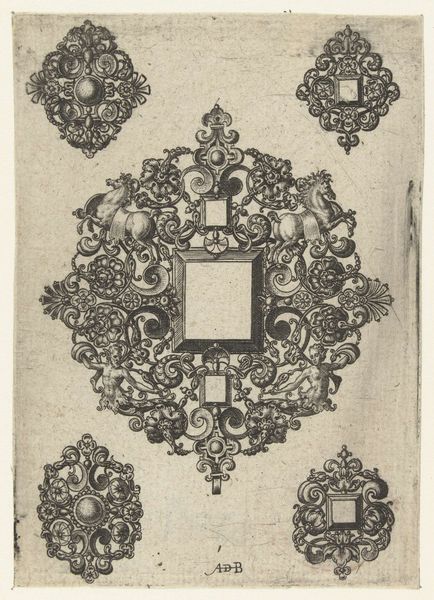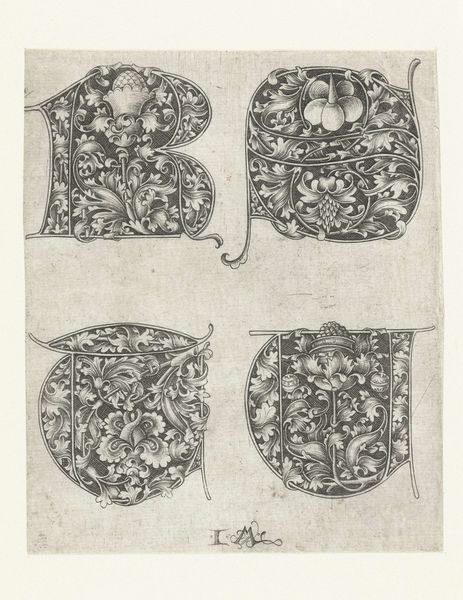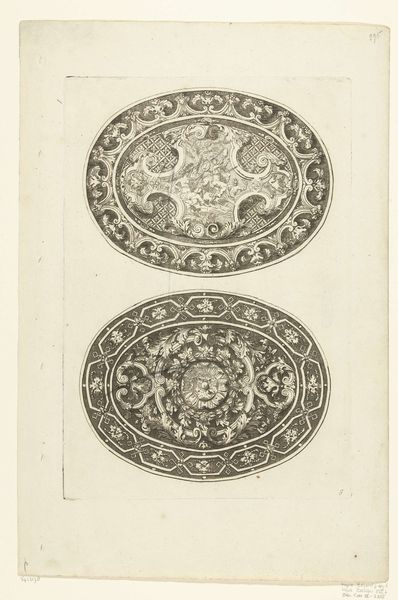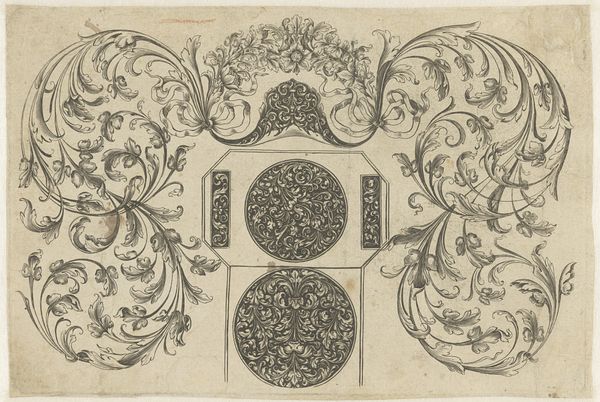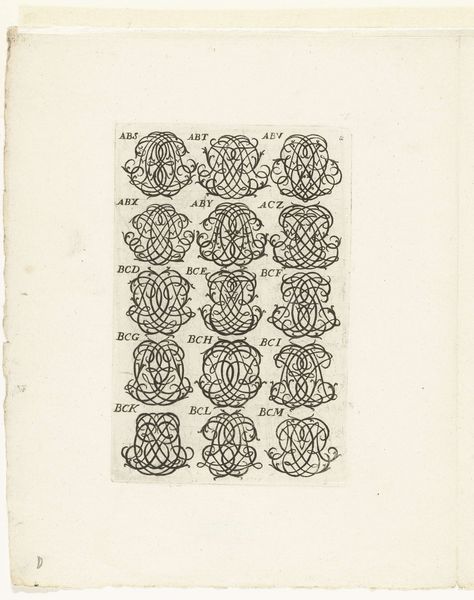
Zestien grote en vierentwintig kleine objecten en ornamenten before 1800
0:00
0:00
drawing, ornament, print, ink, engraving
#
drawing
#
ornament
#
pen drawing
# print
#
ink
#
ancient-mediterranean
#
decorative-art
#
engraving
Dimensions: height 277 mm, width 187 mm
Copyright: Rijks Museum: Open Domain
Editor: Here we have "Zestien grote en vierentwintig kleine objecten en ornamenten," or Sixteen large and twenty-four small objects and ornaments, an engraving from before 1800, creator unknown, housed here at the Rijksmuseum. There's such a meticulous, almost obsessive quality to the detailed renderings of each ornament, especially considering the artist remains anonymous. How do you interpret this work within its historical context? Curator: This print isn't just a decorative sheet, but a document of its time. Think about the social and economic structures of pre-1800 Europe. Who had access to these kinds of intricate, luxury objects? And more importantly, who *didn’t*? The meticulous detail highlights a culture obsessed with ornamentation as a display of power and wealth. Editor: So, you see it as a commentary on class? Curator: I see it as a *reflection* of class. The very act of cataloging these ornaments implies an existing hierarchy. The unnamed artist, in meticulously recreating these objects, invites us to question the values placed upon them. We need to think about accessibility and exclusivity. Who benefits from this elaborate system, and who is excluded? Editor: That's a really interesting way to frame it. I was just thinking about it formally, the play of light and shadow, the composition... But I hadn't considered the social implications of these being objects of privilege. Curator: Exactly. And how do these forms reinforce existing social norms and gender roles? Who typically commissions, owns, and uses these objects? Understanding those relationships unlocks so much more about the artwork itself. Editor: That makes me consider this less as a catalogue and more as a social inventory. Thanks, that perspective really helps. Curator: It's about constantly questioning and connecting the artwork to broader conversations. Looking beyond just the aesthetics to see the power structures they represent.
Comments
No comments
Be the first to comment and join the conversation on the ultimate creative platform.
